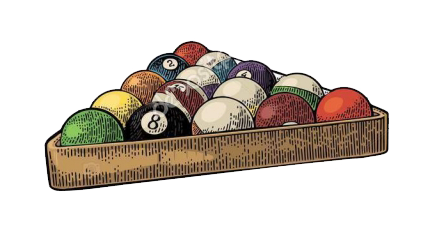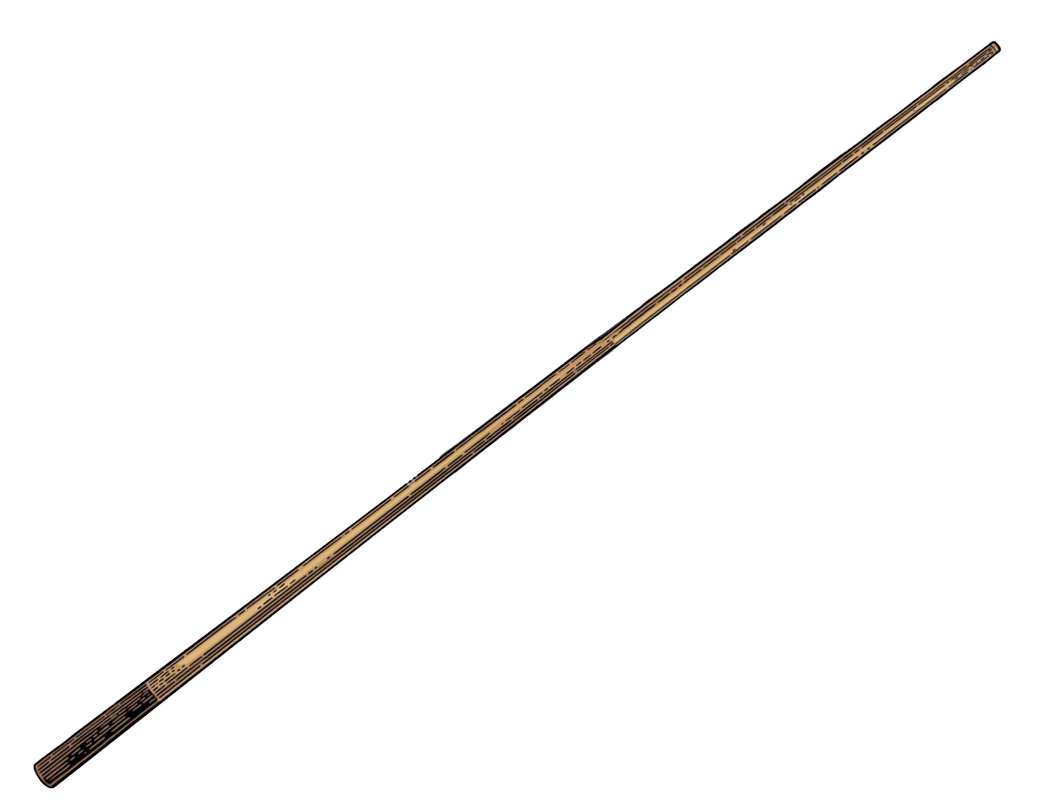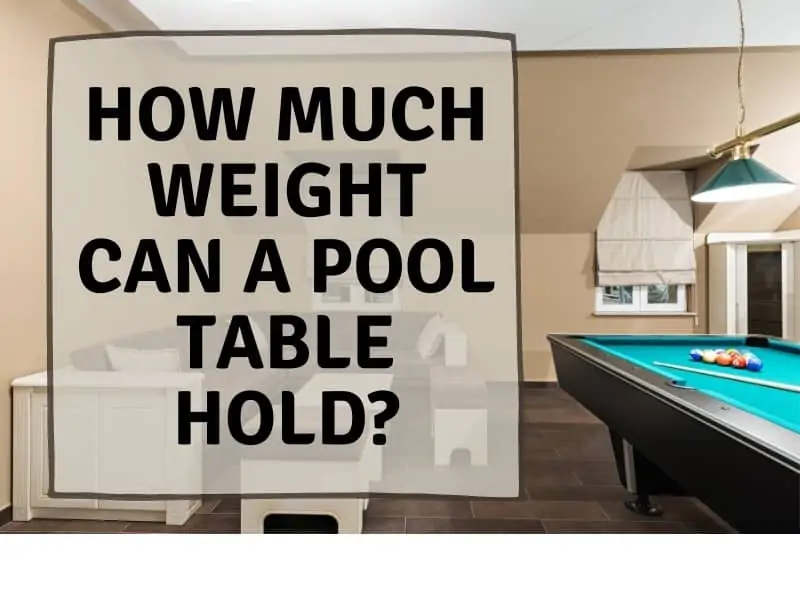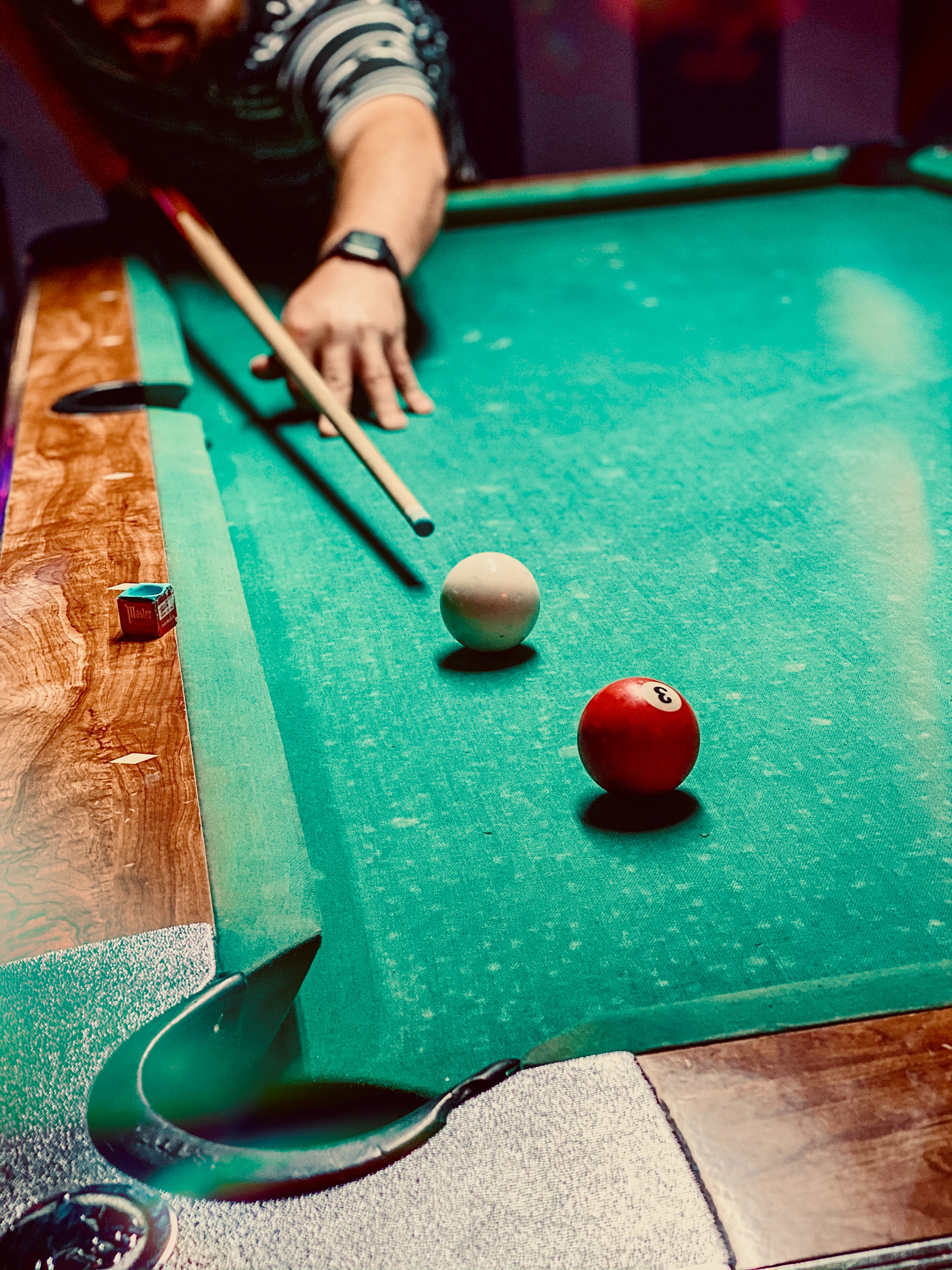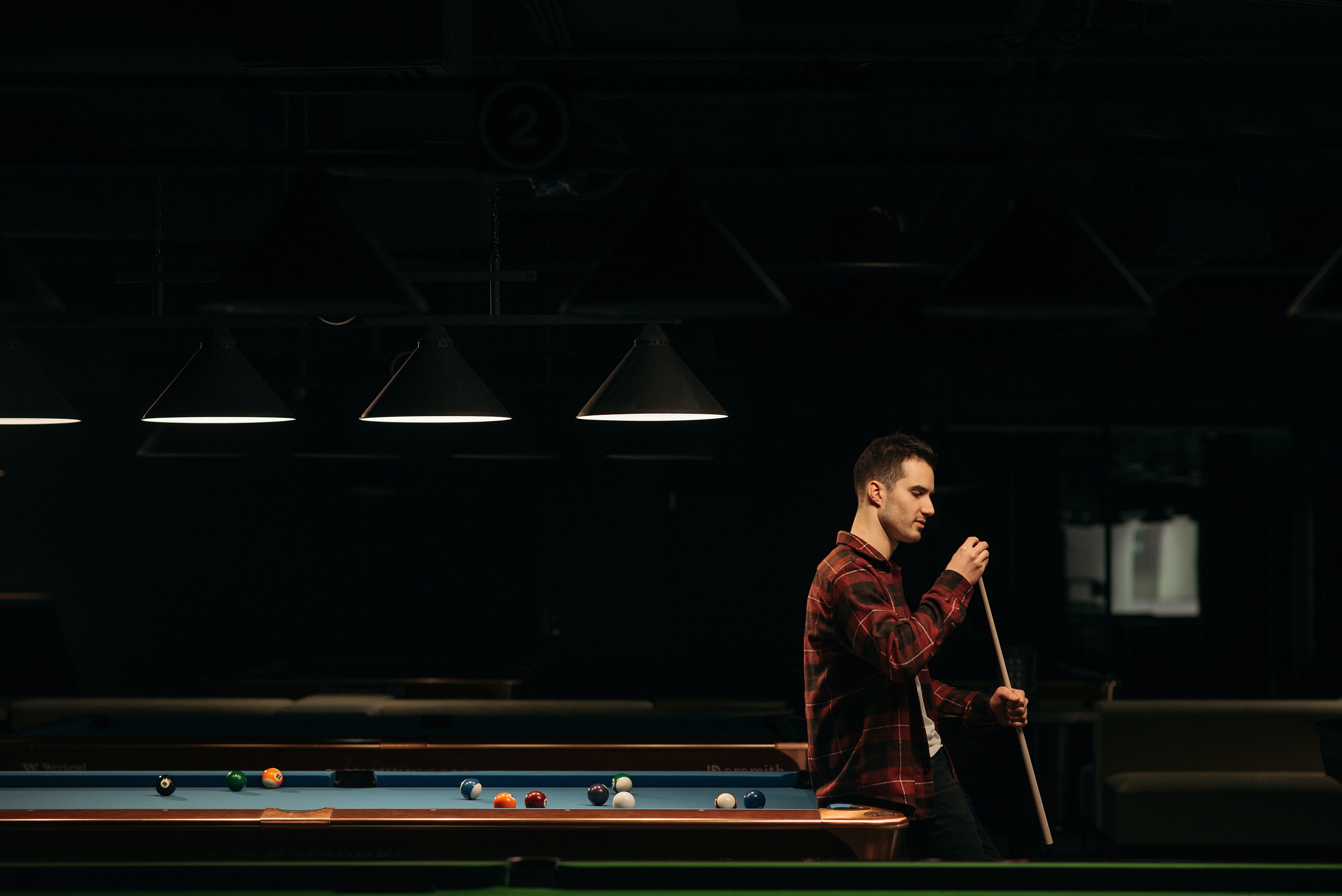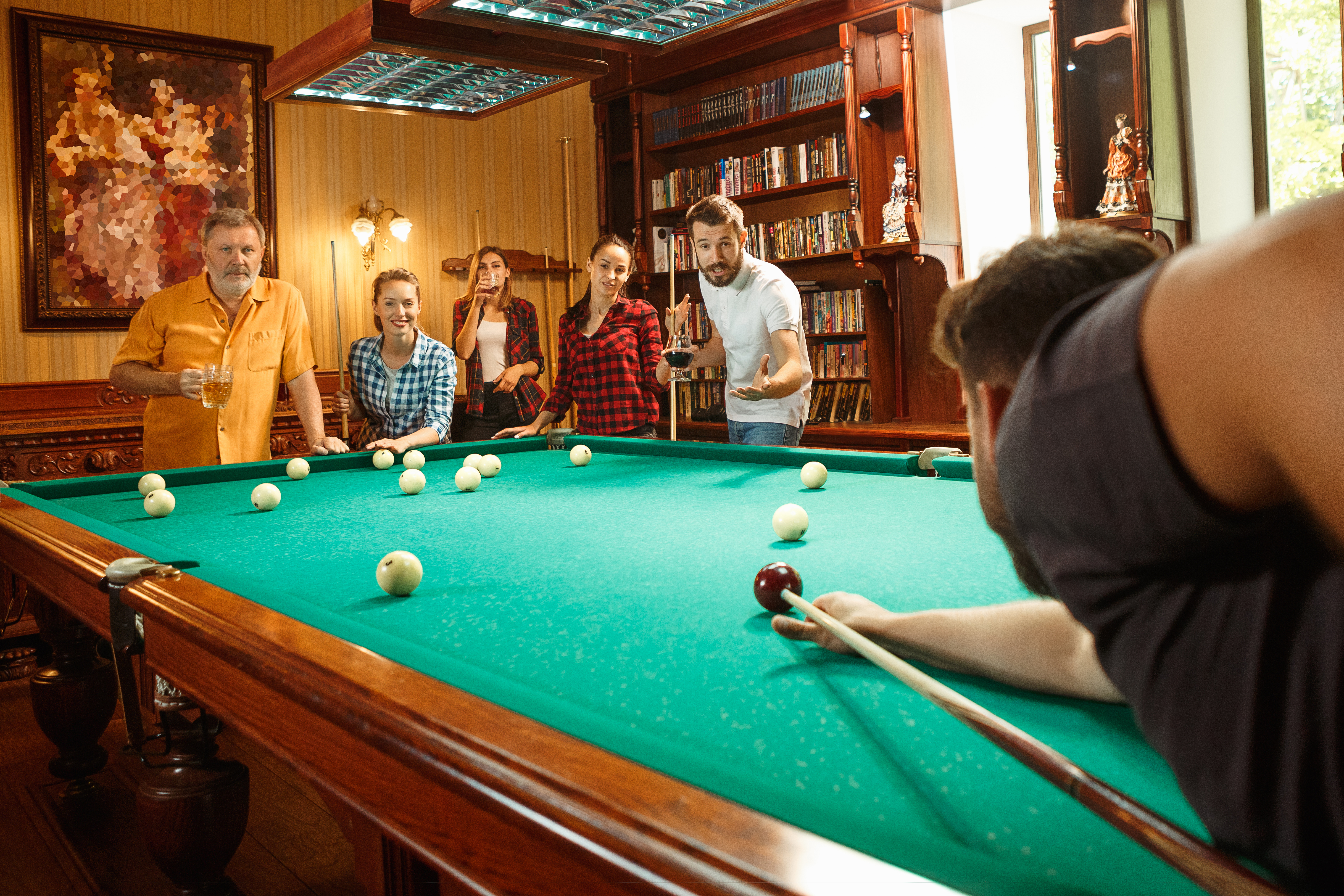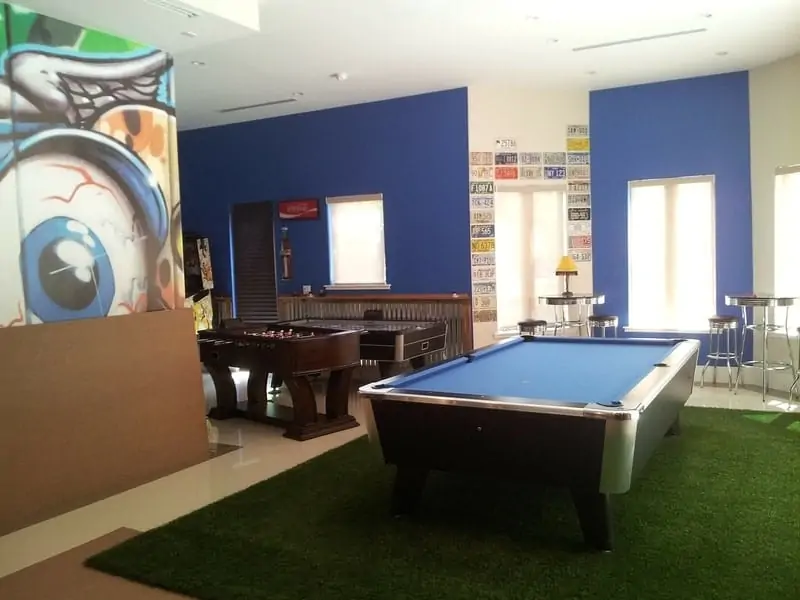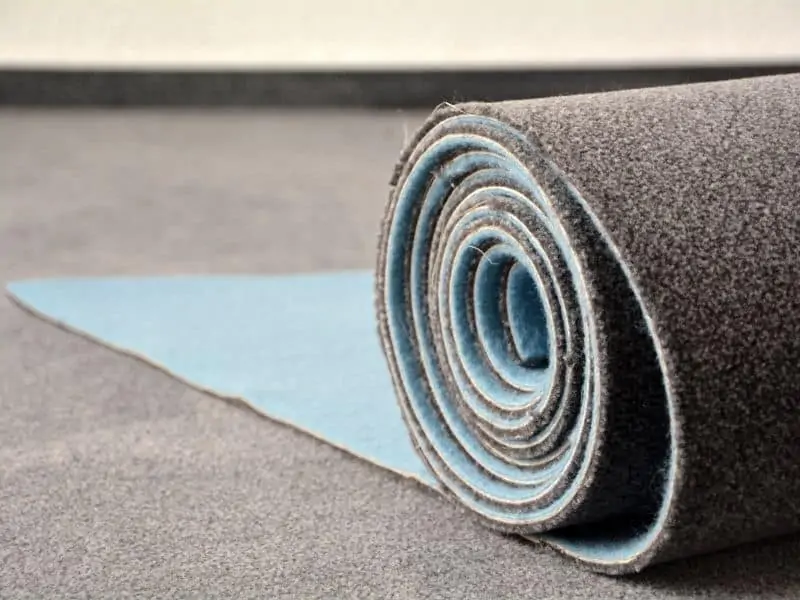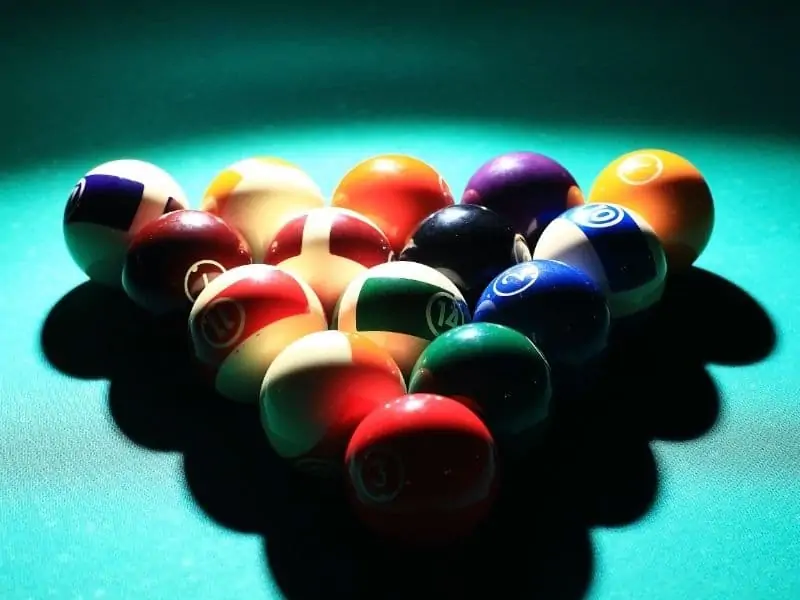Most pool tables are heavy and seem incredibly sturdy. You may have seen a pool tournament on television in which the winning player jumps up and stands on the table to celebrate. Or maybe you have a pool table you’re not using and you want to place some boxes or other items on it for storage. But to avoid damaging the table, you need to know: How much weight can a pool table hold?
Although most pool tables are heavy and sturdy, they’re not designed to hold any more weight than is required for the game of pool. The safe zone for most pool tables is in the 5 to 10-pound range. Any more than that and you risk damaging the felt, the railings, or the pool table itself.
Read on to discover the breakdown of different pool tables and how much weight they can hold.
Why Not to Put Heavy Things on a Pool Table
I want to start this off by saying that it’s never a good idea to place anything heavy on a pool table. While some tables are built sturdier than others, there are many components that won’t hold up under the stress or strain of a foreign object on the table— especially a heavy one.
Pool table felt can be stretched, scuffed, and scratched easily in the process of putting something that doesn’t belong on the table. The railings can be damaged with a little force. The wood frame of the table can be cracked. And the playing surface, whether it be slate or wood, can crack, warp, or break.
At the very least, setting anything heavy on a pool table will force it out of level. If you want to play on the table again, you’ll need to re-level it beforehand.
Now, all that being said, let’s take a look at the different types of tables and their construction to give you an idea if you should risk putting extra weight on your table.
The Type of Pool Table Determines Its Weight Limit
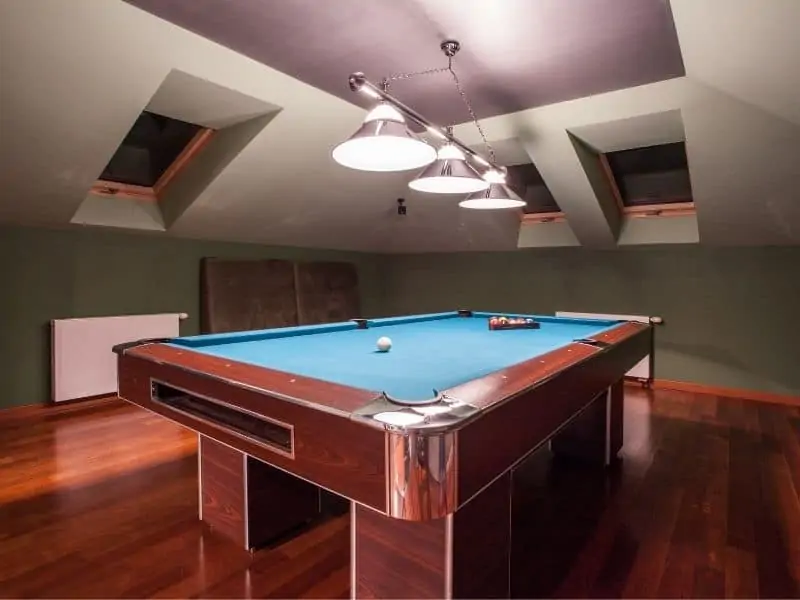
There are many different types of pool tables out there. Some of them are sturdier than others. With certain tables, you can probably get away with putting something heavy or standing on them. However, you’re tempting fate when you do so. Of course, if you don’t plan on using the table ever again, you should feel free to put whatever you want on it, as long as you know it will likely come away damaged.
Commercial Slate Tables
The tables you see at pool tournaments feature the sturdiest construction of all pool tables. Tournament tables feature 1-inch, 3-piece slate beds and the heavy-duty construction to support those beds. Slate is heavy, and tournament tables are usually the best of the best.
So, when you see a player jump up on the table to celebrate, it’s unlikely you’ll see the table collapse under him or her. Mostly because those tables have a large piece of wood underneath the slate. You also likely won’t see the damage done to the felt or the small but impactful change in the level of the slate. But, tournament tables are generally re-felted and re-leveled after every tournament, so it’s not such a big deal when the player jumps on top to do a victory dance.
Coin-Operated Tables
The next sturdiest tables on the list are coin-operated tables found at your local bar. These are built with abuse in mind. They generally feature a 1-piece slate that’s surrounded by solid construction because these tables need to be moved on occasion for events. They also have sturdy wood-and-metal legs with built-in leveling mechanisms.
Coin-op pool tables can take a lot of abuse. However, their felt and railings are still somewhat fragile and easily damaged. And it’s still possible to crack the slate with enough weight. While it’s probably okay to sit on the edge of the table to make a shot, it’s not a good idea to store your gym equipment on the table.
Residential Slate Tables
Next on the list, we have residential slate tables. These aren’t designed with much wear and tear in mind. In fact, ideally, they’re supposed to sit in one spot for years at a time, serving only one purpose: a place to play pool.
This means that they may look sturdy and they are heavy, but they’re only designed to support the weight of the slate and regular gameplay. They have a sturdy construction with a 3-piece slate bed, meaning you can easily mess up the level of the table by putting something heavy on it. When one of those three pieces of slate gets knocked out of level, the behavior of the balls is affected.
If you want to store some pillows and blankets on a residential slate table, you should be fine. But anything heavier or harder and you’re asking for damage.
MDF Tables
Medium-density fiberboard pool tables are the least sturdy. Since they don’t have the heavy slate that other tables do, they’re not constructed to hold as much weight. In fact, many MDF tables have foldable legs for easy storage. As you can imagine, anything with foldable legs isn’t going to hold a ton of extra weight.
Plus, since the playing surface is made of wood, putting extra weight on the table can warp or damage the wood much easier than it could on a slate table.
Some MDF tables are built well. In fact, unless you know what you’re looking for, it can be difficult to tell some MDF tables from slate tables. But still, these relatively sturdy wood tables should not be used for standing or storage. They’re susceptible to the same problems as slate. Namely, the felt, rails, and playing surface can all be damaged with enough weight.
In Conclusion
If you want to keep your table in good condition, avoid putting anything on it that doesn’t belong. If you absolutely have to put something heavy on it, do so as carefully as possible. Use a pool table cover, and put a tarp or blanket over that. Place items on it as gently as possible, and keep them away from the railings so you don’t damage the bumpers.
Slate pool tables are heavy and they look like they can hold a bunch of weight. But in reality, they have too many components that are designed only for billiards and nothing else. Using them for storage or as a stepladder is something to avoid, if possible.
Other Articles You May Be Interested In
- Is It Ok To Stand On A Pool Table?
- Top 11 Best Pool Tables Under $1000
- Are Pool Tables Too Heavy for the Second Floor?
